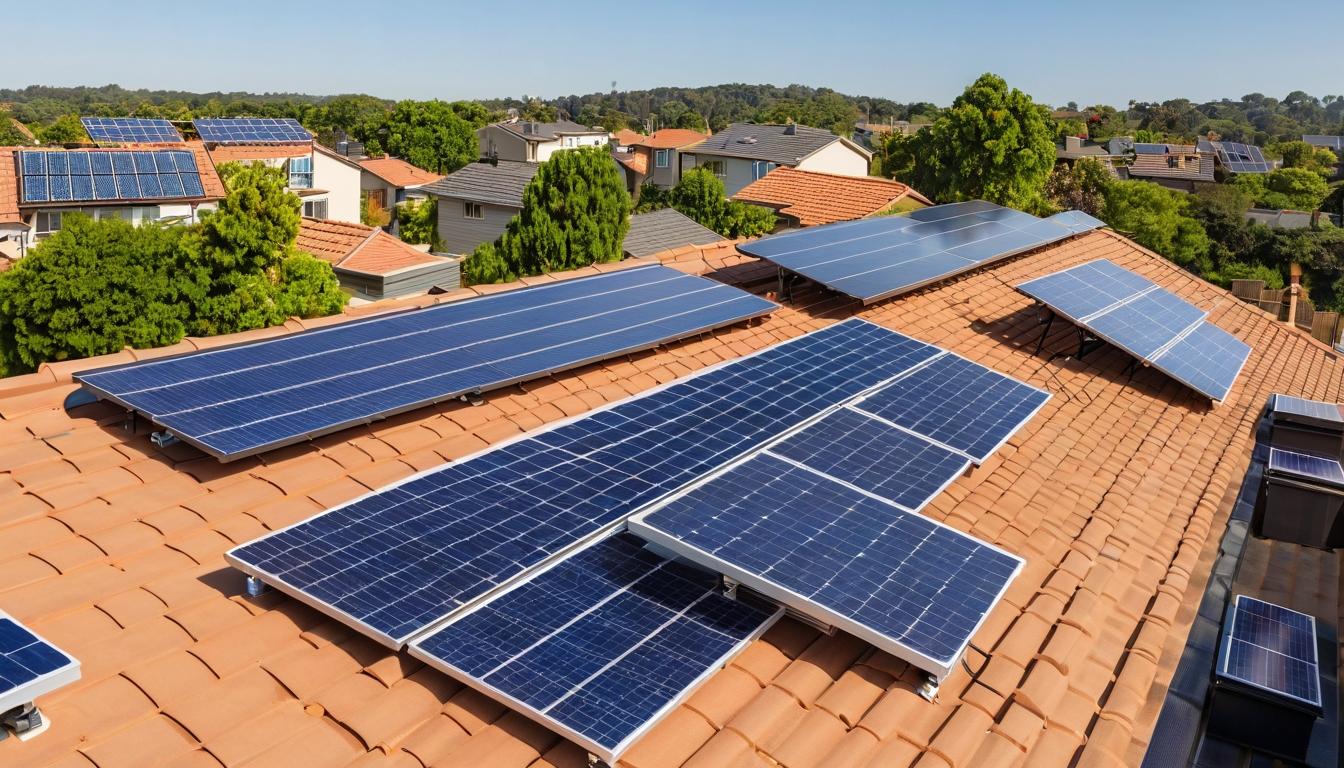The solar panels on your neighbor's roof tell only half the story. While homeowners across America celebrate their shrinking electricity bills, a quiet revolution is unfolding in laboratories, factories, and regulatory offices that will transform how we power our homes. The technology you installed last year might already be obsolete, and the financial benefits you're counting on could be dramatically different than what your salesperson promised.
Walk through any residential neighborhood today, and you'll see the familiar blue-black rectangles multiplying across rooftops like technological mushrooms after a rainstorm. But behind this visible expansion lies a complex web of technological innovation, market manipulation, and policy shifts that most consumers never see. The solar panels being manufactured today bear little resemblance to those from just five years ago, and the ones coming tomorrow will make current technology look like flip phones in a smartphone world.
Manufacturers are racing to develop perovskite-silicon tandem cells that could boost efficiency by 50% or more. These aren't incremental improvements—they're quantum leaps that could cut the number of panels needed for the same power output in half. The implications are staggering: smaller roof footprints, lower installation costs, and potentially cheaper electricity for everyone. But this innovation comes with a catch: the rapid pace of change means today's premium system could be tomorrow's outdated technology.
Meanwhile, the financial landscape for solar is shifting beneath our feet. The federal tax credit that has driven solar adoption for years faces an uncertain future, with political winds blowing in conflicting directions. State-level incentives are even more volatile, with net metering policies changing monthly in some regions. Homeowners who locked in favorable rates last year might find their neighbors getting completely different deals today.
Installation practices represent another hidden frontier of change. The traditional rack-and-panel approach is giving way to integrated solar roofs, building-integrated photovoltaics, and even solar windows. These technologies promise seamless aesthetics and potentially lower costs, but they come with their own complications for repairs, maintenance, and home resale value.
Battery storage has emerged as the missing piece that makes solar truly revolutionary. The ability to store excess energy for use at night or during outages transforms solar from a supplemental power source to a primary one. But battery technology is evolving even faster than solar panels, with new chemistries promising longer life, faster charging, and better performance in extreme temperatures.
The supply chain for solar components has become a geopolitical football, with tariffs, trade disputes, and manufacturing shifts creating price volatility that rarely gets passed along to consumers in straightforward ways. The panels on your roof might have components from four different continents, assembled in a fifth location, and sold through a sixth.
Maintenance and durability represent another area where reality often diverges from marketing materials. While solar panels are famously low-maintenance, they're not no-maintenance. Dust, pollen, bird droppings, and weather events can significantly impact performance. New self-cleaning coatings and monitoring technologies are addressing these issues, but they add complexity and cost that many homeowners don't anticipate.
The environmental story of solar manufacturing continues to evolve as well. While solar power itself is clean, the manufacturing process involves energy-intensive procedures and materials that raise legitimate questions about the full lifecycle environmental impact. Manufacturers are responding with recycling programs, cleaner production methods, and more sustainable supply chains, but progress is uneven across the industry.
For homeowners considering solar, the timing question has never been more complicated. The old advice to "wait for prices to drop" competes with the reality that incentives might disappear. The decision involves weighing current costs against future benefits in a market where both are moving targets. Add in rapidly changing technology, and the calculus becomes dizzyingly complex.
The role of utilities in this transformation cannot be overstated. As more homes generate their own power, utilities are scrambling to adapt their business models, leading to new rate structures, fees, and policies that can dramatically impact the economics of solar ownership. Some utilities are embracing the change, while others are fighting rearguard actions to protect their traditional revenue streams.
Community solar projects offer an alternative path for renters and homeowners with unsuitable roofs, but these programs vary wildly in quality and value. Some provide genuine savings and environmental benefits, while others amount to little more than clever marketing with minimal impact.
The solar industry's workforce development challenges represent another hidden dimension of the revolution. The rapid growth has created shortages of qualified installers, electricians, and technicians in many markets, leading to quality control issues and project delays that rarely make it into sales presentations.
Looking ahead, the integration of solar with other smart home technologies promises even more dramatic changes. Electric vehicle charging, smart appliances, and home energy management systems are converging to create homes that not only generate their own power but optimize its use in ways that were science fiction just a decade ago.
The truth about the solar revolution is that it's messier, more complicated, and more exciting than most homeowners realize. The technology is advancing at breakneck speed, the economics are shifting daily, and the long-term implications are profound. What's clear is that the solar panels of tomorrow will be smarter, more efficient, and more integrated into our daily lives than we can currently imagine. The question isn't whether to go solar, but how to navigate this rapidly evolving landscape to make the best decision for your home, your wallet, and the planet.
The solar panel revolution: What your installer isn't telling you about the future of home energy

